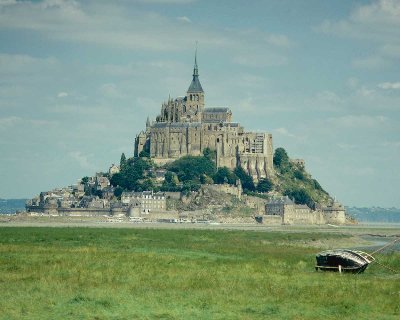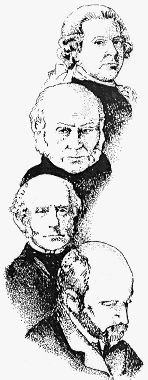Adams Education
Today, a 19th-century intellectual struggles with 20th-century technology. The University of Houston's College of Engineering presents this series about the machines that make our civilization run, and the people whose ingenuity created them.
Our second president, John Adams, sired a dynasty. His son John Quincy was also president of the United States. His grandson Charles was a congressman and ambassador to England during the Civil War. But we're interested in John Adams's great-grandson Henry Adams. In his autobiography, The Education of Henry Adams, he measures himself against his extraordinary army of forebears and finds himself wanting -- even though he himself was a writer, a congressman, and a noted historian.
Toward the end of his autobiography Adams portrays himself as a sort of everyman facing the juggernaut of 20th-century science and technology. His chapter "The Dynamo and the Virgin" takes us through the great Paris Exhibition of 1900. Adams was one of 40 million people who visited 80,000 exhibits there. And he was drawn back day after day, trying to understand it all.
Adams's most important work of history had been his study of two medieval edifices -- the abbey at Mont St Michael and Chartres Cathedral. They'd led Adams to see the remarkable social impact of medieval Christianity -- with its focus on the Virgin Mary.
Now he gazed at a whole new technology that had sprung into being in just a few years' time -- dynamos, telephones, automobiles -- invisible new forces of radiation and electric fields. He saw that the dynamo would shake Western civilization just as surely as the Virgin had changed it 800 years before. His historical hindsight made him comfortable with the 12th century -- but this was more than he could digest.
His guide through much of the Exhibition was the aeronautical pioneer Samuel Pierpoint Langley. Langley was a down-to-earth physicist, willing to explain things in functional terms. But Adams was too intelligent to take "this is how it works" for understanding.
"[I found myself] lying in the Gallery of Machines," he tells us, " -- my historical neck broken by the sudden irruption of forces totally new."
Adams doesn't mention two ideas that completed the intellectual devastation before his autobiography was published -- quantum mechanics and relativity theory. But he knew, on a visceral level, that they were thundering down the road at him -- that the exhibit represented a great unraveling of 19th-century understanding. In the end, he laments the blind spot of the 20th century -- our denial of mystery. The Virgin was the mystery that drove the medieval technological revolution. The Dynamo -- and modern science -- were ultimately being shaped by forces no less mysterious.
And he was right. 19th-century science and technology came out of the exhibition hall changed beyond recognition.
I'm John Lienhard, at the University of Houston, where we're interested in the way inventive minds work.
(Theme music)
Adams, H., The Education of Henry Adams, Vol. II. New York: Time Inc. Book Division., 1964, Chapter 25.
This episode has been greatly rewritten as Episode 1600.


The two structures on which Henry Adams did the definitive studies, the Abbey at Mont St Michel and Chartres Cathedral (clipart)

Four generations of the Adams family
(Drawing by Maria Zsigmond-Baca. By permission of Peter Gordon)